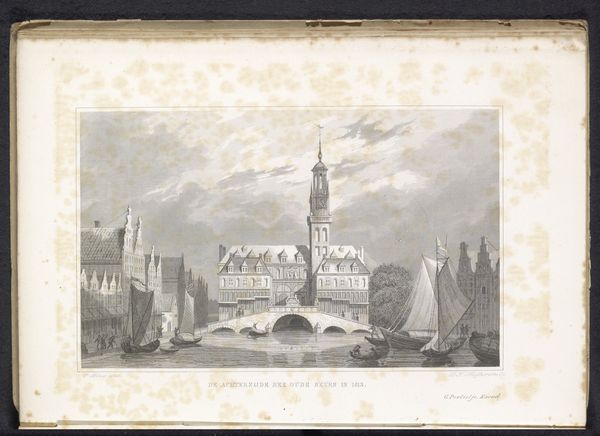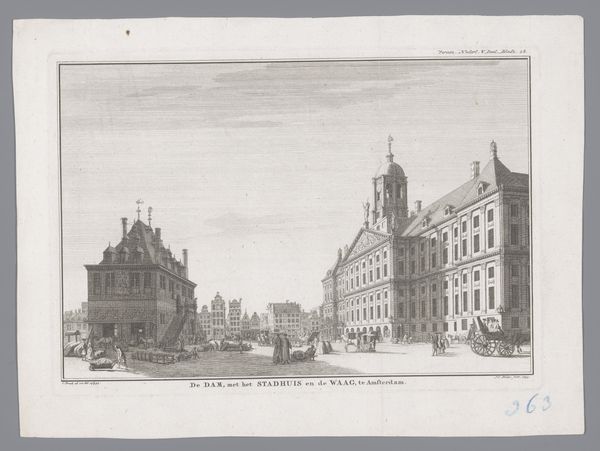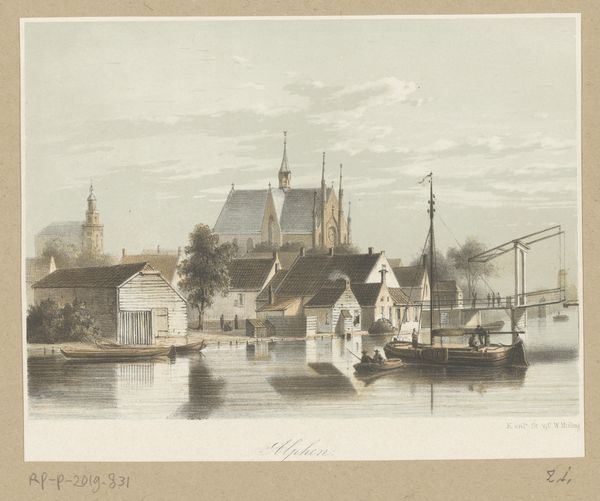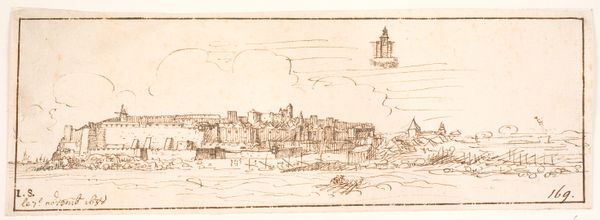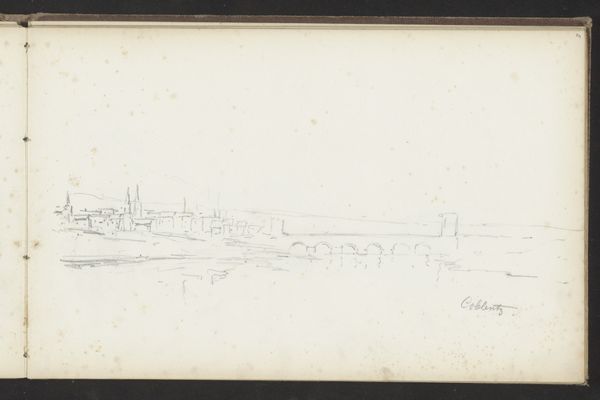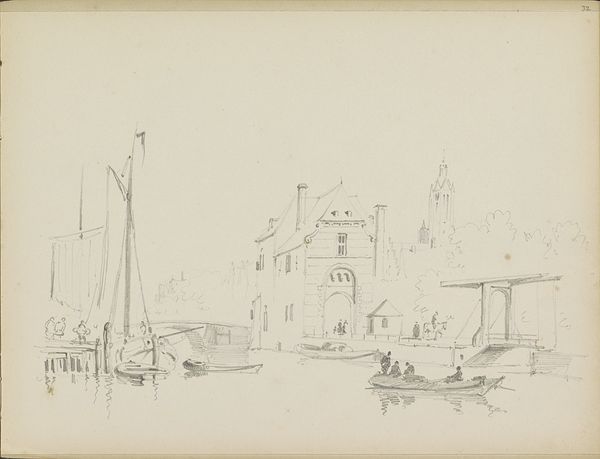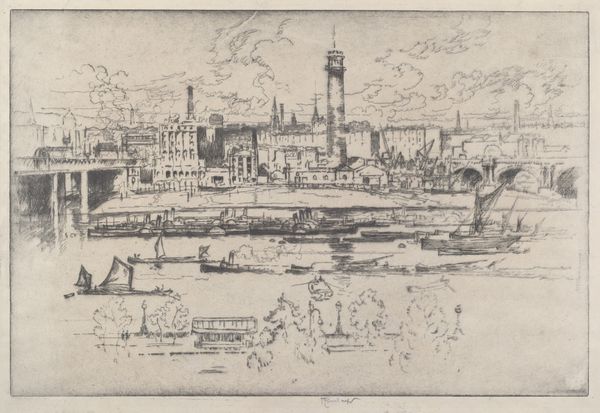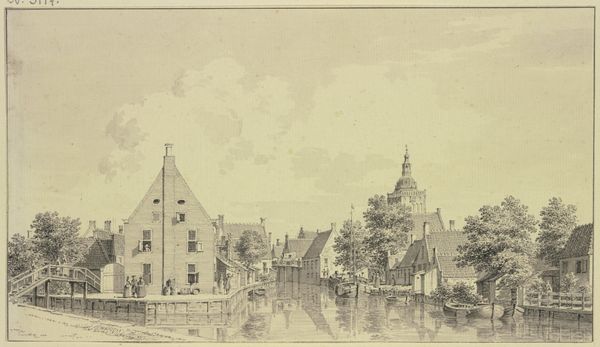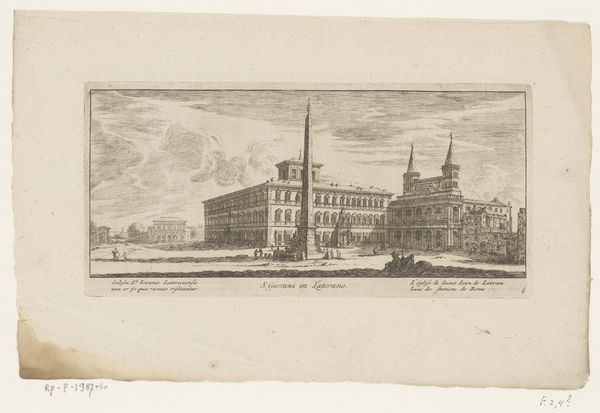
drawing, pencil
#
drawing
#
landscape
#
romanticism
#
pencil
#
cityscape
Dimensions: 129 mm (height) x 238 mm (width) (bladmaal)
Editor: This drawing, "Düsseldorf set fra Rhinen," was created by Martinus Rørbye in 1834 using pencil. It’s got this calm, almost ethereal quality to it, mainly from the monochrome and the detailed lines which shape buildings, boats, and the flowing river. How would you interpret the artistic intention, seen from a structural approach? Curator: From a purely formalist perspective, consider the lines at play. Note the intricate verticality established by the church spire and the masts, creating a rhythm, in counterpoint with the horizontality of the river and the city’s facade. It produces a visual equilibrium. Then there's the contrast: observe how precise line-work in the buildings shifts to the looser strokes describing water movement. How does this variation of strokes affect our understanding? Editor: I guess the different techniques give the drawing depth, and it highlights the distinction between the man-made and the natural worlds, like the buildings are more refined and rigid than the more free-flowing shapes in the river? Curator: Precisely. And reflect upon how this calculated use of light and shadow, limited though it may be by the medium, contributes to a perception of spatial depth. Rørbye wasn't simply capturing a scene, he was structuring a visual experience through strategic choices about line and form. Notice the layering; it's not just about recording a place. It's an artful organization of visual elements. Editor: That's a different angle than what I initially considered. Thanks, now when I observe it, I begin to appreciate its refined layering technique and structural elements a lot more. Curator: Indeed. Form often dictates function, in art, and this drawing offers us a compelling study in how that principle operates.
Comments
No comments
Be the first to comment and join the conversation on the ultimate creative platform.



